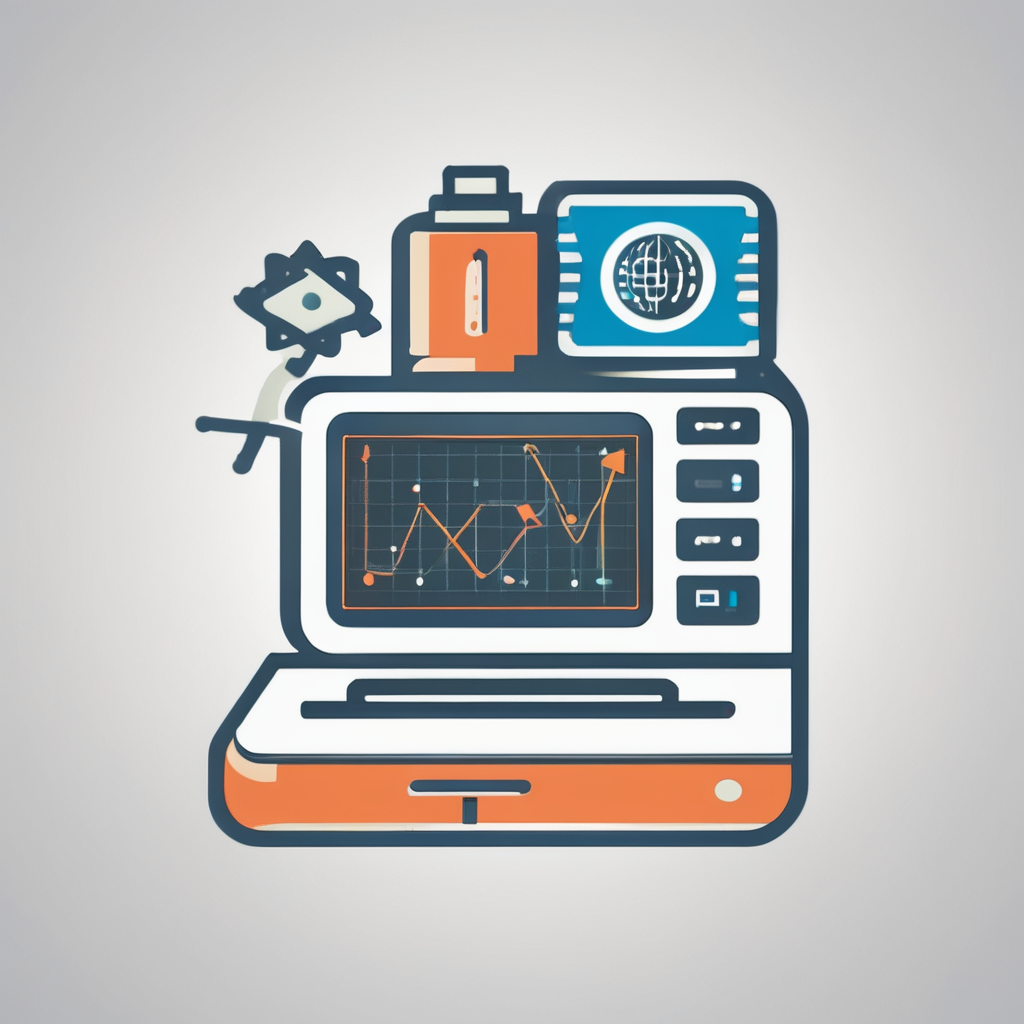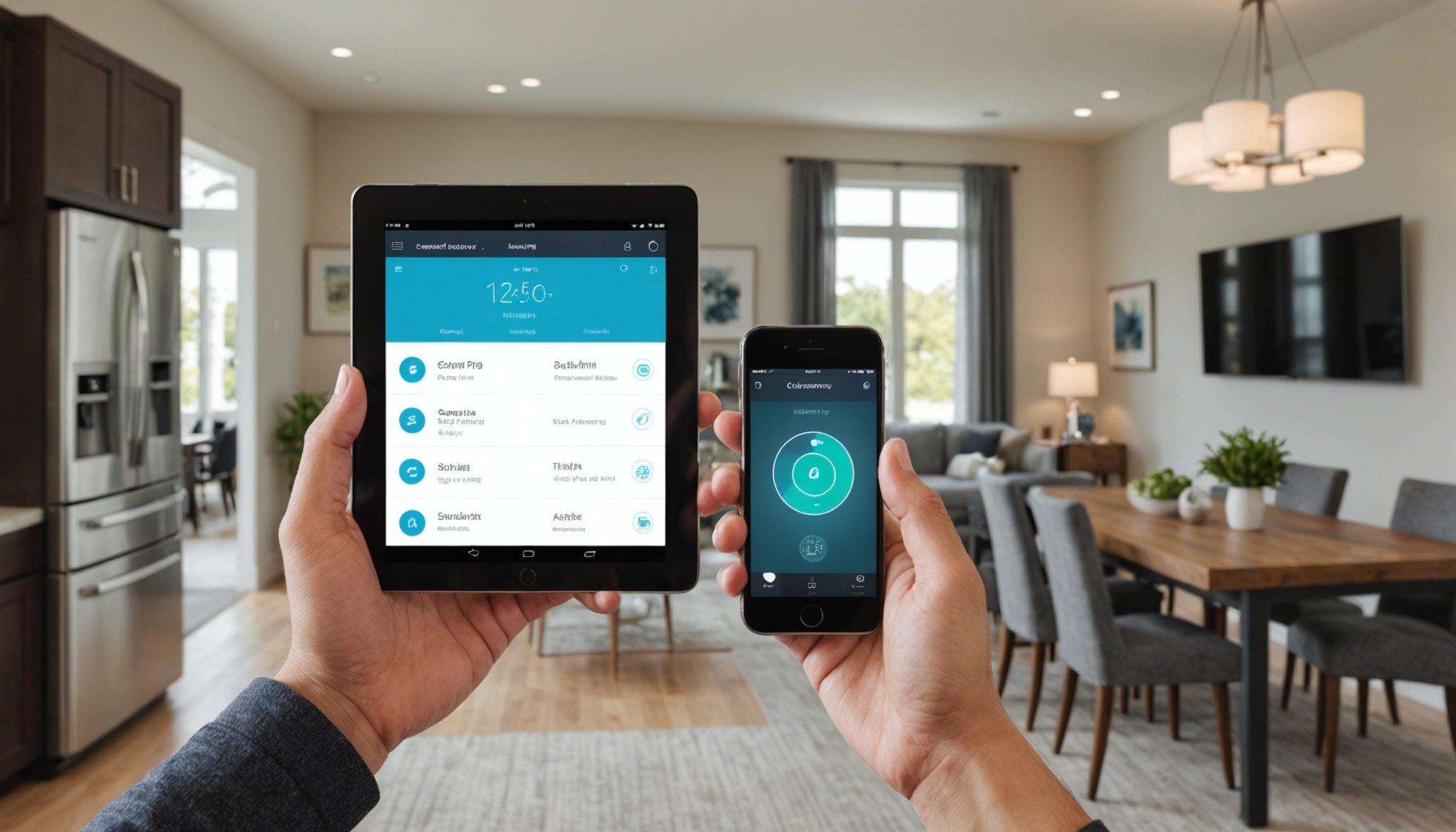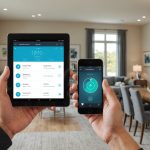Introduction to Smart Home Automation
Smart Home Automation has become an essential aspect of modern living, providing enhanced convenience and improved energy efficiency. At its core, smart home automation involves integrating various household devices through a unified system, allowing users to monitor and control their home environment remotely.
The pinnacle of convenience is smartphone management, which offers users the ability to manage and operate their home automation systems from anywhere. By utilising dedicated apps, homeowners can oversee their energy usage, security settings, and even the climate. This seamless integration ensures that whether you are home or away, you have full control at your fingertips.
Also read : Unlocking Enhanced Augmented Reality: Essential Tips to Maximize Your Smartphone”s Performance
Effective scheduling plays a significant role in optimizing the benefits of smart home automation. With effective scheduling, users can program devices to turn on or off at set times, helping to reduce unnecessary energy consumption. Imagine arriving at a cozy home with pre-set lighting and temperature, all tailored to your preferences without lifting a finger.
When selecting smart home apps, consider features such as user-friendly interfaces, comprehensive device compatibility, and robust security options. These features ensure that your smart home system operates not only efficiently but securely, safeguarding both your data and your peace of mind.
Additional reading : Your Ultimate Guide to Crafting a Daily Reflection Digital Journal on Your Tablet
Setting Up Your Smart Home for Effective Scheduling
Embarking on a smart home setup journey entails ensuring your devices are compatible with your existing infrastructure. Before diving in, identify the essential gadgets such as smart lights, speakers, and thermostats that will be central to your automation. These devices lay the foundation for seamless scheduling and control.
Ensuring Device Compatibility
Device compatibility is paramount in a smart home. It’s crucial to select gadgets that harmonise well with your smartphone apps. Check manufacturers’ websites and app descriptions to verify that your chosen devices will work cohesively. Compatibility ensures that each component communicates effectively, resulting in smoother operation.
Configuration Steps
Configuring your smart home for efficient scheduling involves a straightforward process. Begin by setting up your devices according to their manuals, ensuring they’re connected to a stable Wi-Fi network. Next, integrate these devices into a unified platform, like a dedicated app or hub, allowing you to centralize control. Utilize the app to define specific schedules that align with your daily routines. For instance, program smart lights to adjust brightness automatically based on time of day, enhancing energy efficiency. By meticulously following these steps, you can establish a smart home environment that operates seamlessly and intuitively.
Choosing the Right Apps for Smart Home Automation
Selecting the optimal smart home apps can significantly enhance your living experience. With numerous options available, a user-friendly interface is paramount for seamless integration into your daily routine.
Top Apps for Smart Home Management
When it comes to top app recommendations, some leading contenders have garnered attention for their robust capabilities. Apps like SmartThings, Google Home, and Alexa offer extensive device compatibility, allowing you to control lights, thermostats, and security systems from a single platform. Simplicity and intuitive navigation are their forte, making them ideal for beginners.
Features to Look For in Smart Home Apps
Key features to prioritise when selecting a smart home app include:
- Device compatibility: Ensure the app supports a wide range of smart devices.
- Customisation options: Look for the ability to set up custom routines.
- Security measures: Security is crucial; choose apps with strong encryption.
Comparing Popular Smart Home Platforms
Comparing platforms, SmartThings excels with its extensive device support, while Google Home impresses with voice integration. Alexa offers expansive user-friendly interfaces and robust skills, but may require Amazon devices for optimal use. Evaluate the pros and cons to find the best fit for your needs.
Creating Effective Scheduling Routines
Developing a scheduling routine for smart home devices can greatly enhance efficiency and ease daily management. Begin by identifying which devices could benefit from automation techniques. For example, smart lights can be set to turn on at sunset and off at sunrise, optimising energy use.
Tips for Scheduling Devices
Crafting effective routines involves understanding both your household’s needs and the capabilities of your devices. Leverage automation techniques to schedule routine tasks. You might automate morning routines, like having a smart speaker play news updates while your coffee maker starts brewing.
Geofencing is a useful tool for routines that react to your location. For example, set lights to turn off when you leave home and thermostat adjustments as you approach. These small, automated adjustments can lead to significant energy savings.
Using Triggers for Efficiency
Triggers can enhance the effectiveness of daily schedules. A common method is using sensors that detect motion to turn on lights as you enter a room. This provides convenience while reducing unnecessary energy use.
By incorporating scheduling routines and automation techniques, you not only save energy but also simplify daily management, making your smart home both more functional and efficient.
Troubleshooting Common Smart Home Scheduling Issues
Encountering issues with your smart home schedule can disrupt your day, but these problems are often easy to troubleshoot. Identifying common issues is the first step. Frequently, problems arise from misconfigured settings or app glitches. Other culprits include outdated firmware or connectivity issues.
To start troubleshooting, verify that all devices are connected to the same network. This can often resolve connectivity-related problems. If the issue persists, check your app settings. Ensure all devices are set to the correct time zone, as discrepancies can lead to scheduling mishaps.
Next, consult the smart home app’s support section. These resources frequently offer step-by-step guides for resolving scheduling issues. Pay special attention to settings related to device synchronization.
For persistent problems, consider reaching out to customer support for expert advice. They can provide personalized smart home solutions. Reviewing online forums can also be beneficial, as community members frequently share insights and solutions for common issues.
By following these methods, you can maintain a seamless smart home experience, addressing any scheduling issues with ease. Updating your apps regularly will further prevent future disruptions.
Optimizing Energy Efficiency and Security Through Smart Scheduling
Integrating smart scheduling into your household devices can significantly enhance your home’s energy efficiency. By programming devices to operate during low energy demand periods, you can reduce peak-time consumption and contribute to a more balanced power grid. Simple adjustments like scheduling your thermostat to lower the heating during the night or while you’re away can make a notable difference in energy use.
Smart scheduling doesn’t just conserve energy; it also plays a crucial role in enhancing security features within your home. By syncing lights, cameras, and alarms with specific schedules, you create the illusion of occupancy, deterring potential intruders. For instance, scheduling lights to switch on and off at varying times can simulate normal household activities.
Here are some practical examples:
- Set your vacuum cleaner to operate only during the day when electricity rates are lower.
- Program exterior lights to illuminate after dusk, not only improving visibility but also adding a layer of security.
- Schedule your washing machine during off-peak hours, decreasing your energy bill and promoting a stable energy supply.
By intentionally managing your devices’ operation times, you embrace both economic and protective benefits.
Real-Life Examples and Case Studies
Explore the transformative potential of smart home automation through practical insights.
Successful Smart Home Implementations
In today’s rapidly advancing technological landscape, case studies highlight diverse smart home implementations. A common theme is integrating devices to enhance daily routines. For instance, a user reported seamless operations using a central system to control lighting, temperature, and security — significantly simplifying tasks and increasing home efficiency.
User Testimonials on Scheduling Benefits
Feedback from users illuminates the values of a well-scheduled smart home. Testimonials frequently cite improved user experiences, showcasing how efficient scheduling can lead to time savings and stress reduction. One user extolled scheduling as pivotal in managing household chores effectively, improving overall life quality.
Lessons Learned from Real-Life Examples
Analyzing various case studies uncovers valuable lessons in scheduling success. Effective implementations often emphasize strategic planning and adaptability. Key insights include:
- Prioritising compatibility among devices
- Customising settings to reflect lifestyle needs
- Regular updates to maintain system efficiency
These best practices underline the importance of thoughtful configuration and active user engagement to maximise automation advantages, ensuring a well-orchestrated environment tailored to personal and familial requirements.











